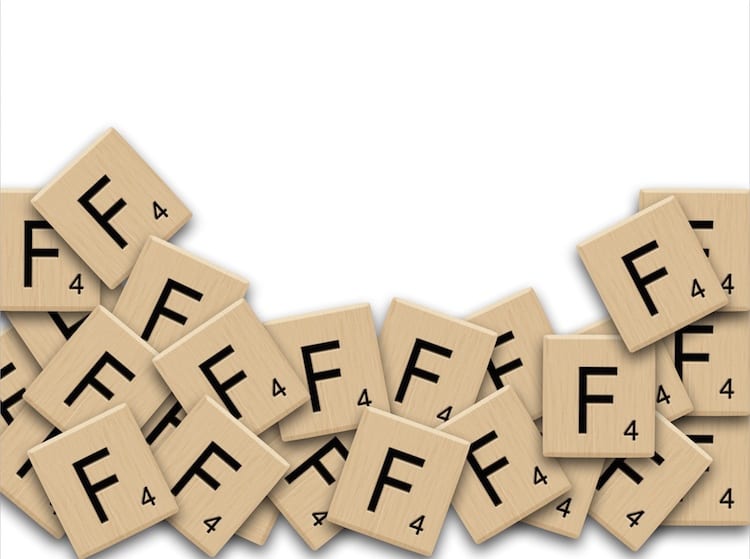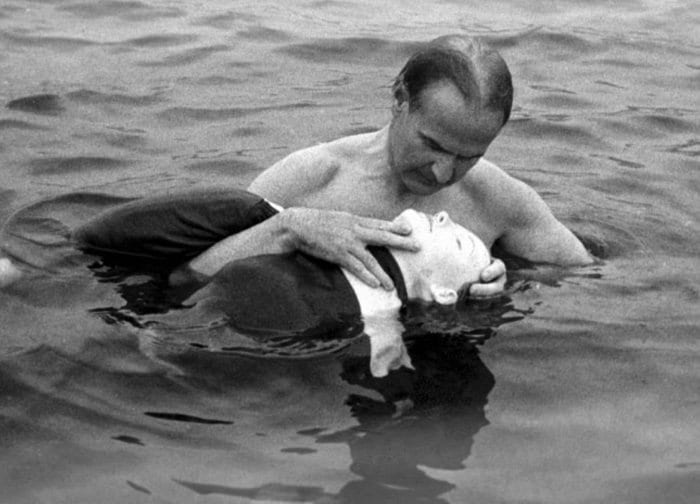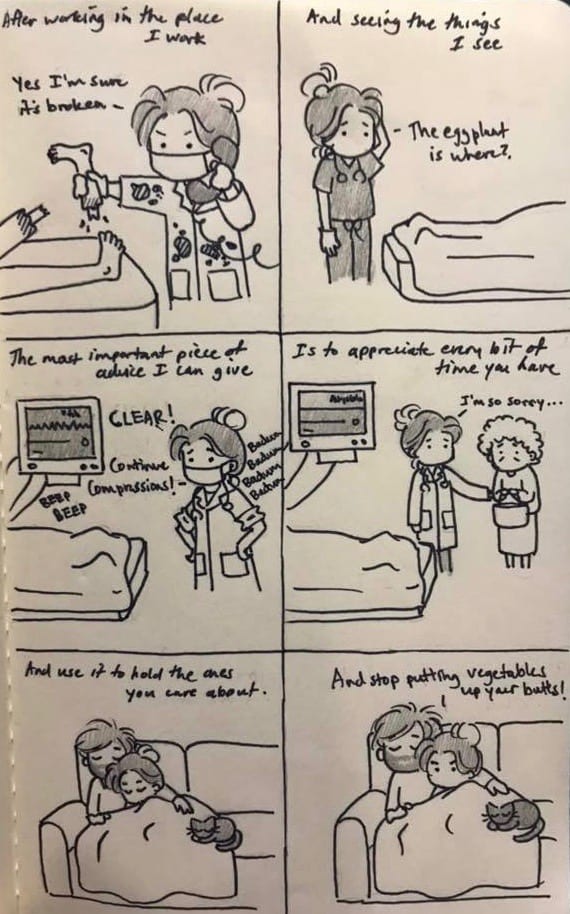Funtabulously Frivolous Friday Five 298
Just when you thought your brain could unwind on a Friday, you realise that it would rather be challenged with some good old fashioned medical trivia FFFF, introducing the Funtabulously Frivolous Friday Five 298
Question 1
Who gets Russell’s sign and what is it?
Reveal the funtabulous answer
Primarily patients with an eating disorder.
Russell’s sign, named after Gerald Russell (1928 – 2018) a British Psychiatrist who first described bulimia nervosa. It is the manifestation of calluses on the knuckles, typically on the dominant hand caused by repeated damage to the skin from the incisor teeth as the patient tries to induce vomiting.
References:
- Russell G. Bulimia nervosa: An ominous variant of anorexia nervosa. Psychological Medicine 1979; 9(3): 429-448
- Strumia R. Dermatologic Signs in Patients with Eating Disorders. Am J Clinger’s Dermatol 2005; 6(3): 165-173
Question 2
Whose lips have been kissed the most in the world?
Reveal the funtabulous answer
L’Inconnue de la Seine (the unknown woman of the Seine)
L’ Inconnue has become Parisian legend and so the popular story goes that in the late 1880s an unknown girl was pulled from the river Seine and it was believed suicide was the cause (although never confirmed). As was popular in the day she was put on public display but no one identified her. This is not to say she did not turn heads, in fact one mortuary attendant made a plaster cast of her half-smile. It was such a hit at the time artists from around Europe were replicating her face in their works, there was mass production of her death mask and the philosopher Albert Camus even referred to her as the “drowned Mona Lisa”. However, this was not the end of there story…
Decades later Asmund Laerdal (yes of Laerdal simulation equipment) was busy building wooden toys in the 1940s and after the war he experimented with a new material… plastic. One of his most famous playthings was ‘Anne doll’ which won toy of the year with its sleeping eyes and natural hair. Still he had not put L’ Inconnue’s face on the doll, nor had his CPR equipment been developed.
During the success of ‘Anne doll’ Laerdal’s two year old son, Tore nearly drowned and Laerdal had to pump water out of his lungs. So it was no surprise that when a group of anaesthesiologists and a researcher named Peter Safar who helped pioneer CPR spoke to Laerdal they had an avid listener.
Laerdal embarked upon making a life-sized mannequin so that people could practise these new life saving techniques. However, he needed a face, he remembered a serene mask hanging on the in-laws’ wall, it was of course L’ Inconnue. Laerdal also kept the name “Anne doll” on his new mannequin (Resusci Anne). So L’ Inconnue has the most kissed lips in the world and according to Laerdal these CRP techniques has saved more than 2 million lives.
Reference
Question 3
In 1834, which piece of medical equipment were The Times commenting on?
…it will never come into general use notwithstanding its value. It is extremely doubtful because its beneficial application requires much time and gives a good bit of trouble to both the patient and the practitioner; and because its hue and character are foreign and opposed to all our habits and associations. It is just not going to get used.
Reveal the funtabulous answer
The Stethoscope.
The basic form of the stethoscope was invented by the French physician René Laënnec who published a description of the instrument in 1819. The early stethoscope consisted of a rigid hollow tube, and the physician listened to the sounds in the chest with one ear. Laënnec published a long treatise on the subject in French after introducing the device.
In 1821 Laënnec’s book was translated into English and published as “A Treatise on the Diseases of the Chest, in which they are described according to their Anatomical Characters, and their Diagnosis established on a new Principle by means of Acoustick Instruments”. The translator was John Forbes M.D., Physician to the Penzance Dispensary and Secretary of the Royal Geological Society of Cornwall.
The quotation given above was written by Forbes, and it appeared in the “Translator’s Preface” to the first English edition of Laënnec’s work. In the second edition and later editions the preface was modified and the quotation was removed.
Forbes’ quote however, is incomplete, and is often used out of context including British parliament to show how shortsighted we can be in medicine. Forbes also suggested that the stethoscope was “one of the greatest discoveries in medicine”. As the stethoscope changed to the device as we know it today it was more widely accepted. The extend quote by Forbes is below:
… I have no doubt whatever, from my own experience of its value, that it will be acknowledged to be one of the greatest discoveries in medicine by all those who are of a temper, and in circumstances, that will enable them to give it a fair trial. That it will ever come into general use, notwithstanding its value, I am extremely doubtful; because its beneficial application requires much time, and gives a good deal of trouble both to the patient and the practitioner; and because its whole hue and character is foreign, and opposed to all our habits and associations. It must be confessed that there is something even ludicrous in the picture of a grave physician formally listening through a long tube applied to the patient’s thorax, as if the disease within were a living being that could communicate its condition to the sense without.
Laennec translation 1821
References:
- Laennec RTH. De l’auscultation médiate, ou, Traité du diagnostic des maladies des poumons et du coeur, fondé principalement sur ce nouveau moyen d’exploration. [Tome I] [Tome II] 1819
- Laennec RTH. Traité de l’auscultation médiate : et des maladies des poumons et du coeur. [Tome I] [Tome II] [Tome III]. Paris: Chaudé. 1826
- Laennec RTH. A treatise on the diseases of the chest and on mediate auscultation. [Translation John Forbes] London: Underwood. 1821.
- Quote investigator: Stethoscope-doubtful
Question 4
What rubber medical object was first discovered in South America ?
Reveal the funtabulous answer
A rubber enema syringe.
Mesoamericans initially used rubber from 1600BC to create balls and play games with them as well as making containers. But in 1736 Charles Marie de la Condamine (1701-74) sent samples to Académie royale des sciences of a substance he called ‘latex’ He later confessed he called the tree this latex appeared from the ‘enema tree’ as natives would fashion a syringe by sculpting it into a pear-shaped bottle and attaching a wooden flute.
In 1751, he presented a paper by François Fresneau to the Académie (published in 1755) that described many of rubber’s properties. This has been referred to as the first scientific paper on rubber.
In England, Joseph Priestley, in 1770, observed that a piece of the material was extremely good for rubbing off pencil marks on paper, hence the name “rubber”.
Reference:
- Adam Komisaruk. The Botanic Garden by Erasmus Darwin, Volume 1. ISBN 1315534649. Page 356.
Question 5
Who wrote:
Doctors are just the same as lawyers; the only difference is that lawyers merely rob you, whereas doctors rob you and kill you, too.
Reveal the funtabulous answer
Anton Chekov (1860-1894)
Chekov, of course, is the renowned Russian writer, dramatist and physician. This quotation is from his play Ivanov.
He expressed his chimeric literary and medical existence in the following terms:
I realise I have two professions, not one. Medicine is my lawful wife and literature my mistress. When I grow weary of one, I pass the night with the other. Neither of them suffers because of my infidelity.
Doctors seem to appreciate the metaphors of the romantic relationship for their connection to medicine, as evidenced by the popularity of Matt Edwards post republished on LITFL as ‘New Girlfriend’.
And Finally, from our new author Jenny Zhao, MD…

FFFF
Funtabulously Frivolous Friday Five
Dr Neil Long BMBS FACEM FRCEM FRCPC. Emergency Physician at Kelowna hospital, British Columbia. Loves the misery of alpine climbing and working in austere environments (namely tertiary trauma centres). Supporter of FOAMed, lifelong education and trying to find that elusive peak performance.




